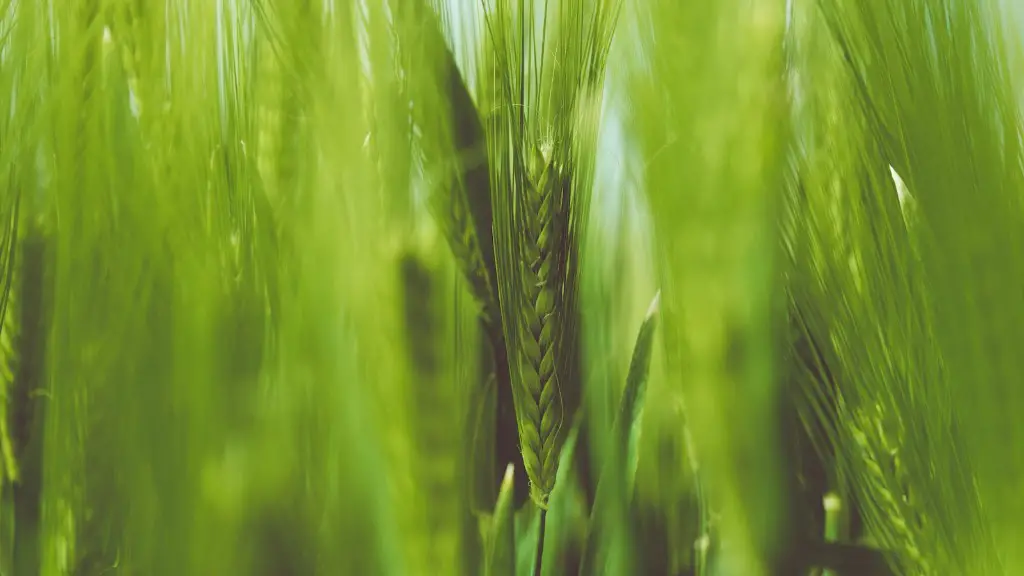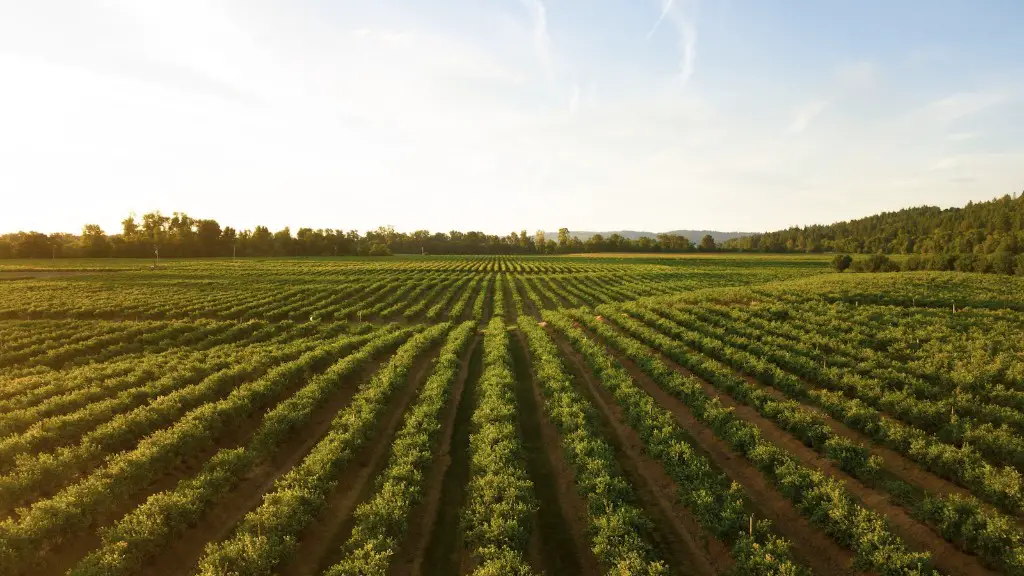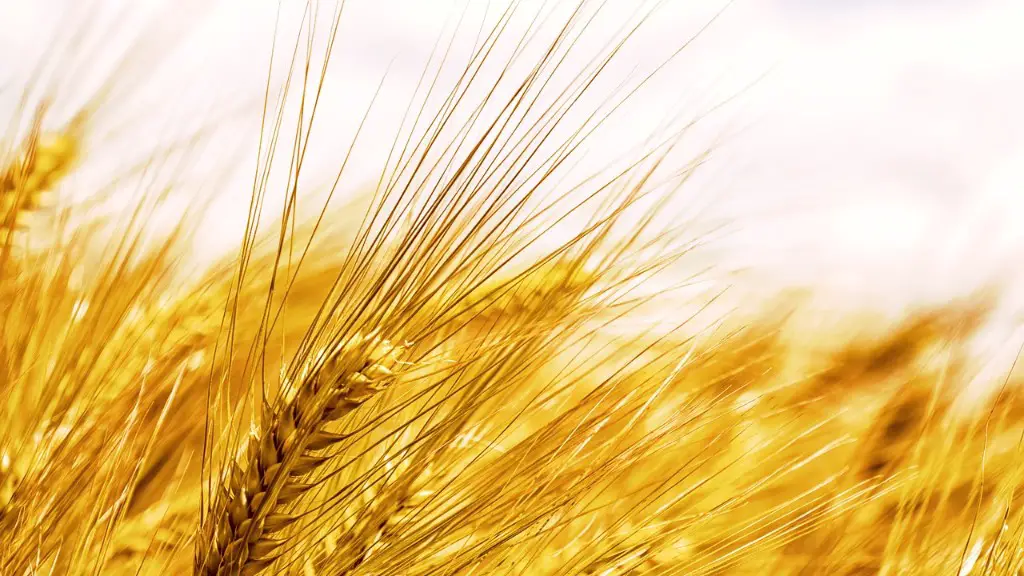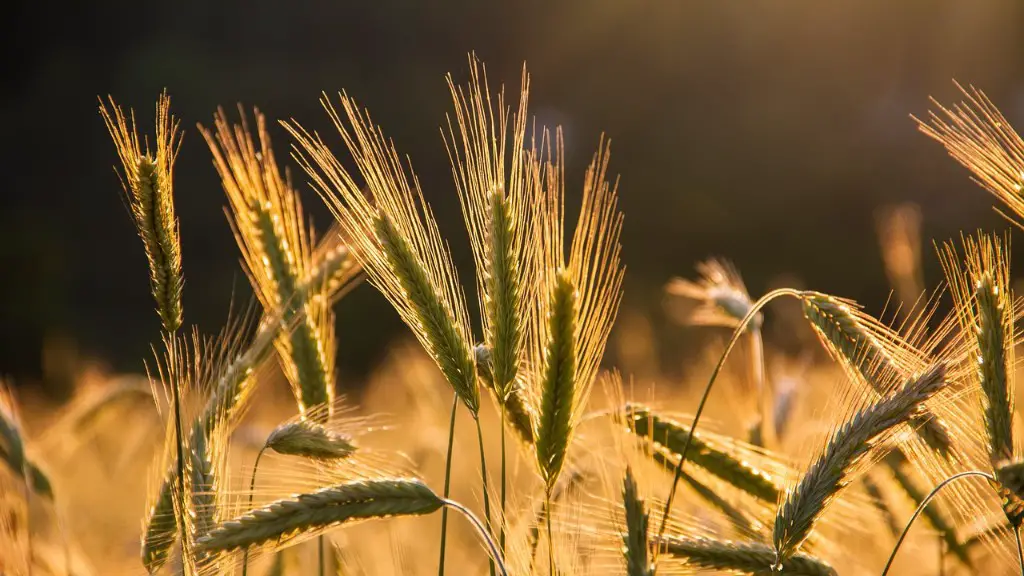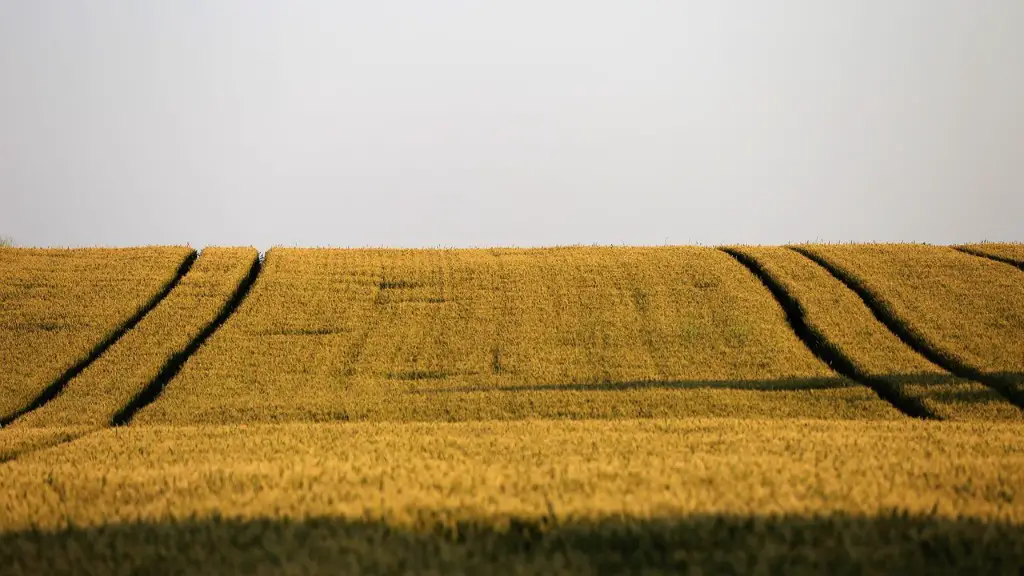Producing food economically is an important goal for any agricultural producer. One way to achieve this objective is by reducing the cost of production. There are a few strategies which can be employed to cut down costs in the agricultural industry. By employing these techniques, producers can ensure their operations are kept financially viable.
One way to cut down costs is to ensure that resources are used efficiently. This includes carefully controlling inputs, such as seed, chemicals, varieties and labour. Resources should only be used when necessary, with the level of usage optimised to maximise yield and minimise costs. By eliminating waste and focusing on production, producers can significantly reduce their overall costs.
Another method of cost reduction is to maximise the use of technology. By leveraging the latest technologies, producers can improve the efficiency and accuracy of their operations. This can include the use of precision agriculture technologies, which can accurately detect soil variability, adjust settings accordingly and apply the necessary inputs for each level of land. Such technologies ensure that producers can capitalise on the available resources and minimise their costs.
Environmental concerns have also come to the forefront in recent years, with farmers looking for ways to enhance sustainability while minimising costs. By focusing on environmental stewardship, producers can save money in the long run. Practices such as adjusting tillage practices, planting cover crops, reducing soil disturbance and planting perennial crops are all effective strategies to protect the environment while also reducing costs.
Producers can also reduce their costs by diversifying their operations. By diversifying their crops, producers can take advantage of seasonally higher prices and reduce their risk. Furthermore, diversification can also help to reduce input costs, as producers can source inputs from multiple suppliers and secure a better price.
Lastly, producers should focus on marketing more effectively. By using effective marketing techniques, producers can secure higher prices for their products. This can include creating a brand, selling directly to consumers and leveraging modern technology to reach a larger number of customers. By taking steps to ensure that their products are getting noticed, producers can earn better prices, increasing profitability.
Maximizing Efficiency
Maximizing efficiency is one of the best ways to reduce the cost of production in agriculture. This involves making sure that all inputs are utilized in order to maximize yield and reduce waste. By paying attention to the amount and type of inputs used, producers can ensure that their ventures are profitable. Techniques such as crop rotation can be employed in order to reduce input costs while ensuring maximum fertility levels.
Another important way to increase efficiency is to adopt crop insurance schemes. These schemes can provide producers with protection from extreme weather events, while also reducing their costs. Producers can buy insurance against events such as drought and flood, ensuring that they are not adversely affected by such conditions.
Financing is also an important factor to consider when it comes to reducing agricultural cost. By obtaining the best financing deals possible, producers can ensure that their operations continue to be economically viable. This could involve taking advantage of government subsidies and incentives as well as securing lower interest rates from lenders.
Finally, producers can also maximize their efficiency by taking advantage of the latest technology. By using the latest technologies, producers can optimise their operations for maximum efficiency. This includes the use of precision agriculture technologies, which can detect soil variability, adjust settings accordingly and apply the necessary inputs for each level of land.
Reducing Input costs
Reducing input costs is another way to reduce the costs of production in agriculture. This involves ensuring that all inputs are carefully curated, with only necessary resources being utilized. Producers should take the time to analyze each input and compare prices in order to make sure they are paying the best possible price.
A good way to reduce input costs is to buy or rent in bulk. By buying large quantities of supplies, producers can often get discounts and secure better deals in the process. Producers should also seek out partnerships with other producers in order to maximize their purchasing power. This can involve forming cooperatives with other farms or trading resources between each other.
Producers should also focus on using renewable energy sources wherever possible. By using renewable sources of energy, producers can reduce their costs and improve sustainability in the process. Solar and wind energy can be particularly effective when it comes to reducing costs, as producers can generate their own electricity at a fraction of the cost.
Finally, producers can also reduce input costs by using more efficient labor practices. By taking steps to ensure that employees are well trained and that resources are utilised effectively, producers can ensure that their ventures remain financially viable.
Maximising Output
Maximizing output is also an important aspect of reducing the cost of production in agriculture. This involves taking steps to ensure that output is maximised while inputs are minimised. Technologies such as precision agriculture can help producers to achieve this goal, as they can accurately detect soil variability, adjust settings accordingly and apply the necessary inputs for each level of land.
Another way to maximise output is to focus on developing higher quality crops. By taking steps to cultivate better quality crops, producers can secure higher prices for their produce. This can involve selecting the appropriate seed, adjusting tillage practices and incorporating cover crops into their operations.
Value-added products can also be an effective way to increase output. By producing value-added products, producers can improve their profit margins and reduce their costs. Examples of value-added products include processed foods such as jams, salsas and sauces.
Finally, producers should also focus on developing and improving their marketing strategies. By taking advantage of modern digital technologies, producers can reach a larger number of customers, ultimately increasing their profits in the process.
Diversifying Operations
Diversifying operations is another effective way to reduce the cost of production in agriculture. This involves taking steps to ensure that producers are able to take advantage of seasonally higher prices and reduce their risk. Producers can do this by cultivating multiple types of crops as well as engaging in value-added activities.
For example, by diversifying their crops, producers can reduce their dependence on a single crop and mitigate the risk associated with growing a single crop. Furthermore, by diversifying their crops, producers can also take advantage of seasonally higher prices and maximise their profits.
Producers should also consider diversifying into value-added activities. By engaging in value-added activities such as processing, packaging and marketing, producers can significantly reduce their costs and increase their profits. Additionally, by diversifying into various activities, producers can also better manage risks associated with market fluctuations.
Finally, producers should also look into diversifying their sources of inputs. By sourcing inputs from multiple suppliers, producers can often get better deals and optimize their purchasing power. Additionally, by diversifying their sourcing, producers can also mitigate the risk of becoming completely dependent on a single supplier.
Analyzing Outcomes
Analyzing outcomes is another important step when it comes to reducing the cost of production in agriculture. This involves assessing the results of implemented techniques in order to ensure that the desired outcomes have been achieved. Producers should assess the overall cost of production, yields, total revenues and profit margins in order to ensure that their efforts are producing the desired results.
Producers should also compare results from year to year in order to identify potential areas for improvement. By analyzing data from multiple years, producers can identify patterns and trends in their businesses and capitalise on them to increase efficiency and reduce costs. This could involve switching to higher yielding varieties or researching new technologies.
Producers can also save money by analyzing their marketing strategies. By paying close attention to their marketing efforts, producers can ensure that they are reaching their target audience and generating maximum returns on their investments. This could involve adjusting their pricing strategies, refining their marketing messages or utilising more efficient marketing methods.
Finally, producers should analyze their environmental performance. By assessing their environmental practices, producers can ensure they are following sustainable practices while also reducing their costs. This could involve altering tillage practices, planting cover crops or planting perennial crops in order to protect the environment.
